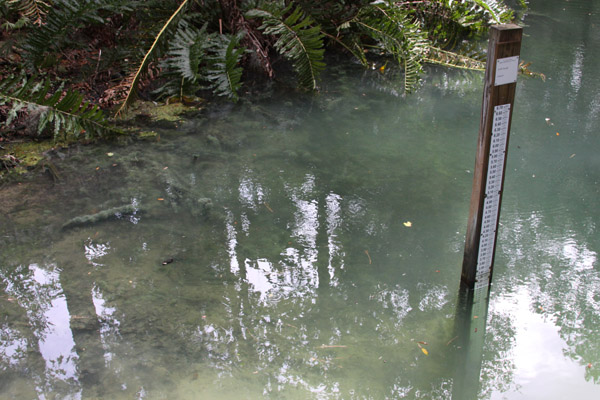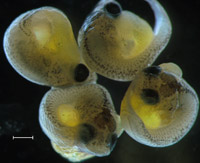Poisonous Water Leads to Bigger, But Fewer, Fish Babies
 Living in extreme environments often entails taking extreme measures to survive.
Living in extreme environments often entails taking extreme measures to survive.
Live-bearing fish mothers in toxic North and South American waters try to give their offspring the best chance at surviving the harsh environment by giving birth to big babies, according to research published in Ecology Letters.
The study examining nine different live-bearing fish species living in waters with toxic levels of hydrogen sulfide in Venezuela, Mexico, the Bahamas, Florida and Oklahoma shows that these fish have all evolved larger offspring size at birth compared to their counterparts living in nontoxic waters.

In conjunction with birthing big babies, fish in toxic environments also give birth to fewer offspring per brood.
Brian Langerhans, a biological sciences professor at NC State and senior author of the paper, says that the study illustrates how theory can accurately predict evolutionary outcomes in the wild, and reveals nuances about the simultaneous evolution of multiple traits. Previous research laid the foundation for this study, predicting the evolution of large babies to facilitate detoxification and enhance competitive abilities in these low-resource environments. But he adds that while evolving bigger babies represents an adaptation to toxic waters, the reduced number of offspring appears to largely reflect a side effect of the shift toward bigger babies.
“Pregnant females in toxic waters carry much larger embryos, more than twice as large at birth, compared to their closest relatives,” Langerhans said. “While natural selection has repeatedly resulted in an adaptive shift in offspring size in toxic waters, we found that the reduction in fecundity, the number of offspring per brood, resulted from a correlation with offspring size and not because it represents an adaptation to these extreme conditions.”
“A widespread life-history tradeoff is that females can either have a few, large offspring or many, small offspring, but usually not many, large offspring,” said Rüdiger Riesch, a postdoctoral researcher who led the study. “The correlation between these two traits arises for a number of reasons, and means that when one evolves, the other does too, as it essentially goes along for the ride. Our findings highlight that as organisms evolve, each trait does not change in isolation of the others, but rather organisms evolve as a complex set of integrated traits.”
- Categories:


